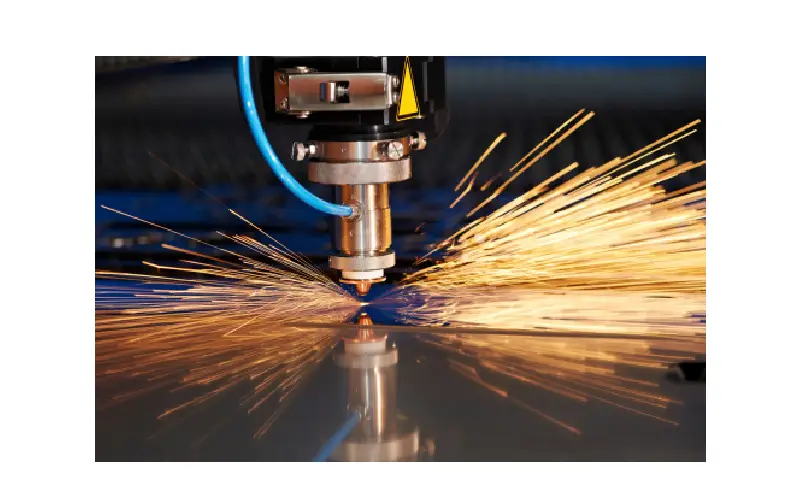How to Choose the Right Materials for Electro-Mechanical Assembly?

Electro-mechanical assembly is a critical process in manufacturing, combining electrical and mechanical components to create functional products. The choice of materials plays a vital role in ensuring efficiency, durability, and performance. Selecting the right materials for electro-mechanical assembly requires a deep understanding of factors such as conductivity, mechanical strength, thermal resistance, and environmental conditions. This article will guide you through the key considerations to make an informed decision when selecting materials for electro-mechanical assembly.
Understanding The Role Of Materials In Electro-Mechanical Assembly
Materials in electro-mechanical assembly must fulfill various functions, including electrical conduction, insulation, mechanical support, and thermal management. Choosing the wrong materials can lead to inefficiencies, component failures, or safety hazards. Some of the primary material types used in electro-mechanical assembly include:

- Metals: Used for conductors, casings, and connectors due to their high electrical and thermal conductivity.
- Polymers and Plastics: Often used as insulators and protective enclosures.
- Ceramics: Utilized for their superior thermal and electrical insulation properties.
- Composites: A combination of materials designed to achieve specific performance attributes.
Key Factors To Consider When Choosing Materials
1. Electrical Conductivity
Conductivity is a fundamental property for materials used in wiring, connectors, and circuit boards. Materials such as copper, aluminum, and silver are commonly used due to their excellent conductivity. The choice depends on cost, weight, and application requirements. For example:
- Copper: High conductivity, corrosion resistance, and reliability, making it ideal for circuit boards and wiring.
- Aluminum: Lighter than copper, commonly used in power transmission applications.
- Silver: Highest conductivity but expensive; used in specialized applications like aerospace and high-frequency circuits.
2. Mechanical Strength and Durability
Mechanical properties determine the material’s ability to withstand physical stress, vibration, and impact. When selecting materials, consider:
- Metals such as stainless steel or titanium for structural components that require high strength.
- Plastics like ABS (Acrylonitrile Butadiene Styrene) for lightweight but durable enclosures.
- Reinforced composites for applications demanding both strength and flexibility.
3. Thermal Resistance and Heat Dissipation
Electronic components generate heat, and materials must be selected to manage thermal loads effectively. Consider the following:
- Aluminum and copper are excellent for heat sinks and enclosures due to their superior thermal conductivity.
- Thermally conductive plastics for lightweight solutions in moderate heat applications.
- Ceramic materials for insulating high-temperature electronic components.
4. Corrosion Resistance
Corrosion can degrade components, affecting performance and longevity. Materials should be chosen based on the operating environment:
- Stainless steel and coated aluminum for high-humidity or corrosive environments.
- Gold or nickel plating on connectors to prevent oxidation.
- High-performance polymers for environments exposed to chemicals and moisture.
5. Electrical Insulation and Dielectric Properties
Insulation is crucial for preventing short circuits and ensuring safe operation. Materials with high dielectric strength include:
- Plastics like PVC, PTFE (Teflon), and polyethylene used for wire insulation.
- Ceramic materials for high-voltage insulation.
- Composite materials designed for specific insulation applications.
6. Weight and Space Constraints
In applications like aerospace, automotive, and consumer electronics, weight and size limitations are crucial. Some material choices include:
- Lightweight aluminum alloys for structural components.
- High-strength plastics for casings and insulators.
- Thin film materials for miniaturized electronic assemblies.
7. Manufacturing and Processing Considerations
Ease of fabrication, cost-effectiveness, and compatibility with assembly methods impact material selection. Some key factors include:
- Machinability: Metals like aluminum are easier to machine, while titanium is harder but offers higher strength.
- Moldability: Plastics such as ABS and polycarbonate are ideal for injection molding.
- Solderability: Copper and gold-plated materials are preferred for soldering applications.
8. Environmental and Regulatory Compliance
Regulatory requirements such as RoHS (Restriction of Hazardous Substances) and REACH (Registration, Evaluation, Authorization, and Restriction of Chemicals) influence material selection. Choose materials that are:
- Lead-free and environmentally friendly for compliance with global standards.
- Non-toxic and recyclable to support sustainability initiatives.
- Resistant to hazardous substances for safe use in medical, aerospace, and industrial applications.
Commonly Used Materials In Electro-Mechanical Assembly
1. Metals
- Copper: High conductivity, commonly used in PCBs and wiring.
- Aluminum: Lightweight, used in enclosures and heat sinks.
- Stainless Steel: High strength and corrosion resistance for mechanical components.
- Gold and Nickel: Used for plating connectors to improve conductivity and prevent oxidation.
2. Plastics and Polymers
- ABS: Durable and impact-resistant, used in casings and structural components.
- Polycarbonate: High impact strength and transparency, often used in enclosures.
- PTFE (Teflon): Excellent insulation and chemical resistance, used in high-frequency circuits.
3. Ceramics and Composites
- Alumina: High thermal stability, used in insulators and circuit boards.
- Fiberglass Composites: Used in PCBs due to high strength and insulation properties.
- Epoxy Resins: Used for encapsulating electronics to protect against moisture and vibrations.
Conclusion
Choosing the right materials for electro-mechanical assembly is essential for ensuring performance, reliability, and compliance with industry standards. By considering factors such as electrical conductivity, mechanical strength, thermal resistance, corrosion resistance, insulation properties, weight, manufacturability, and environmental regulations, manufacturers can optimize their designs for durability and efficiency. Understanding the specific application needs and material properties will lead to the development of high-quality electro-mechanical assemblies that meet industry demands.

Jon Burton, a dedicated advocate for education reform, navigates the landscape of learning with passion and purpose. With a profound belief in the transformative power of education, Jon explores innovative approaches to teaching and learning, seeking to inspire and empower students of all ages. Through his writings, he shares insights into educational theory, curriculum development, and classroom practice, aiming to foster a culture of lifelong learning and intellectual curiosity.








